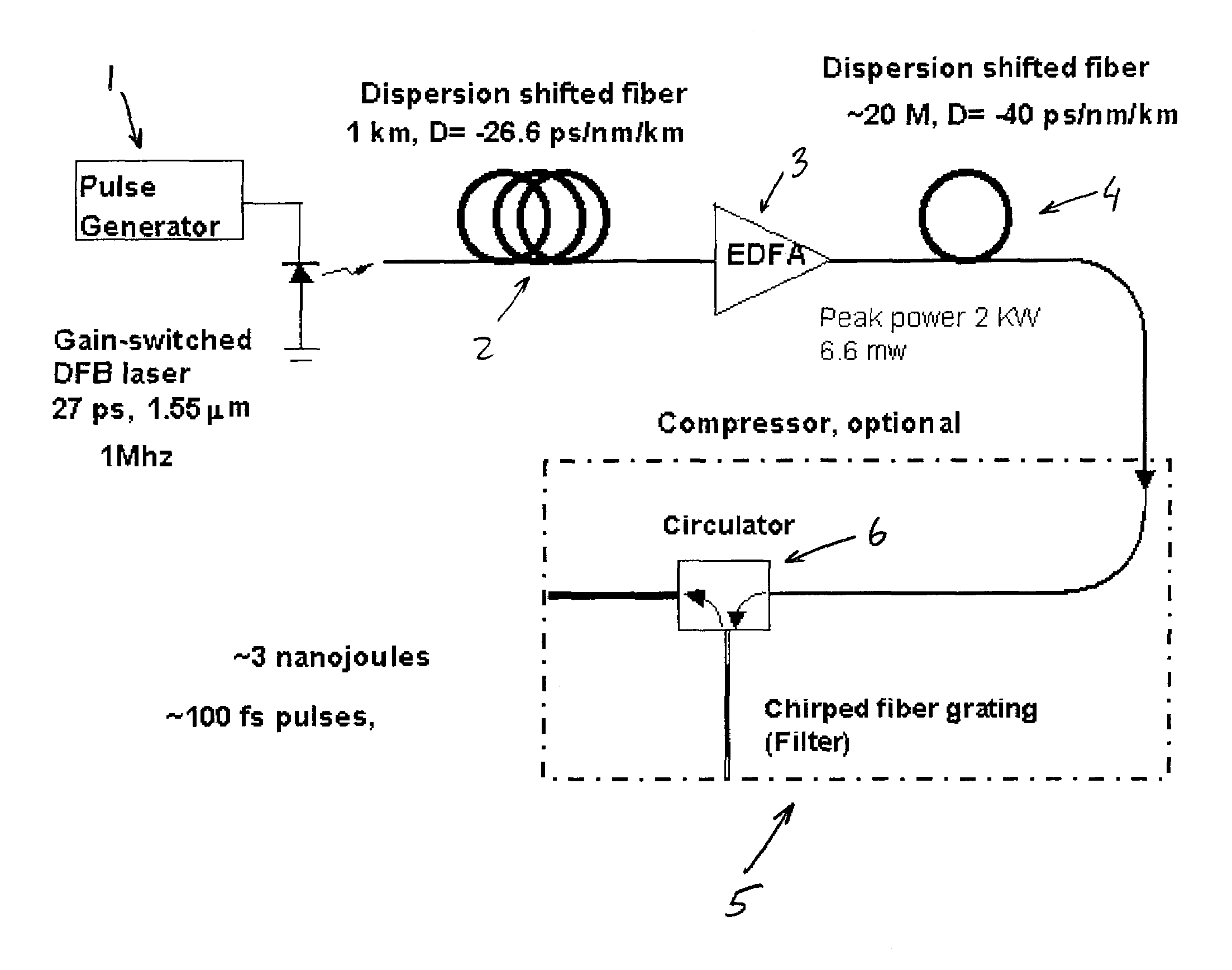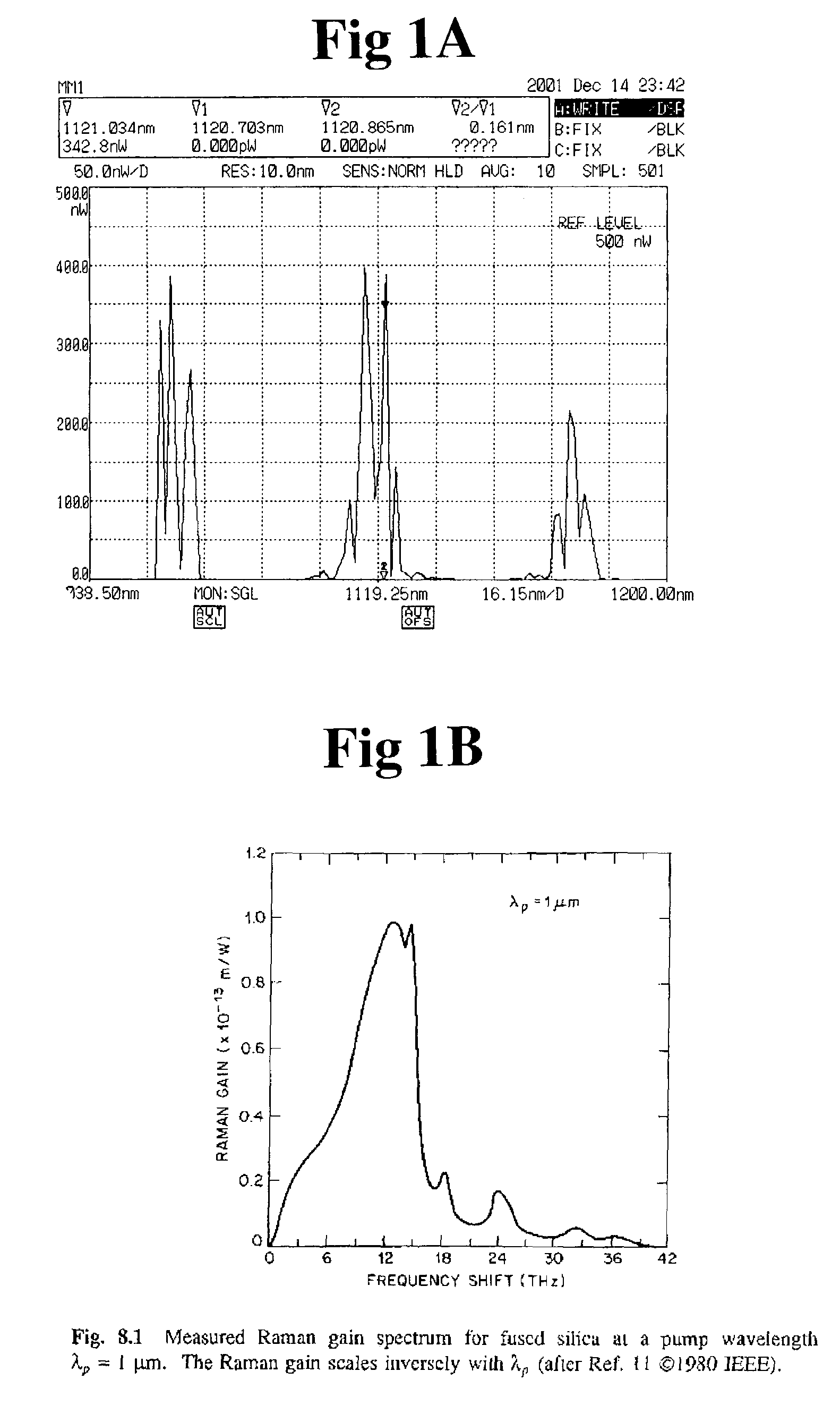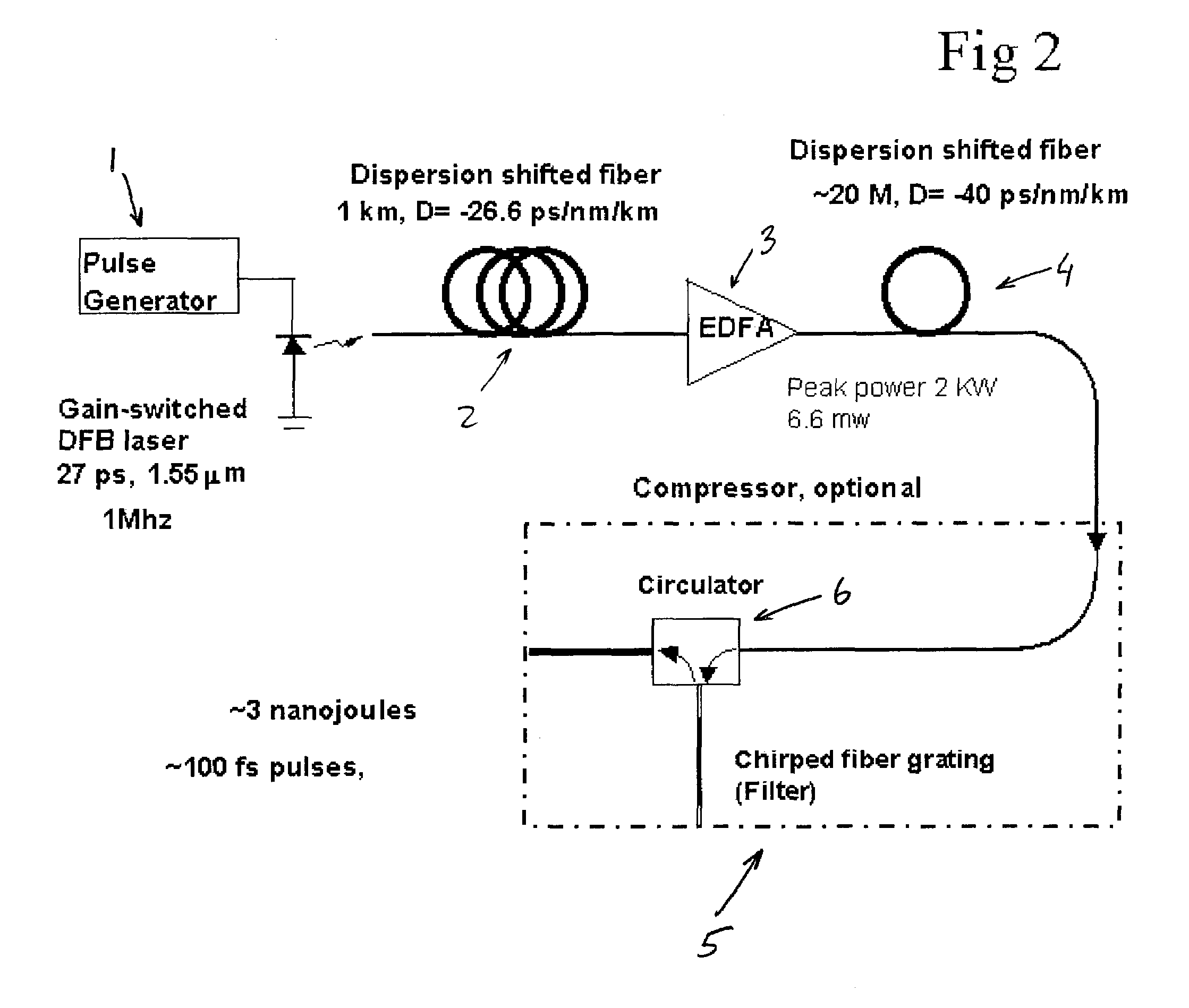Inexpensive variable rep-rate source for high-energy, ultrafast lasers
a laser and ultra-fast technology, applied in semiconductor lasers, active medium materials, instruments, etc., can solve the problems of niobate modulators, degraded signals, and increased telecommunication systems frequency, and achieve cost-effectiveness, lower repetition rates, and high pulse energy
- Summary
- Abstract
- Description
- Claims
- Application Information
AI Technical Summary
Benefits of technology
Problems solved by technology
Method used
Image
Examples
first embodiment
[0034]In the first embodiment shown in FIG. 2, a gain switched laser diode as is described in Ahmed et al is used as the source 1. The chirped 27 picosecond pulse from DFB laser diode at 1550 nm is recompressed to about 3.3 ps in a dispersion shifted fiber 2. This is about 1 km long with D=−26.6 ps / nm / km. The pulse is now about 2× transform limited. The chirp compensation is sufficiently accurate as is described in Mestadagh, D., “Fiber-grating pulse compressor: Performance with initially chirped pulses” Applied Optics 26, pp. 5234-5240 (1987). These pulses are then amplified in an erbium fiber amplifier (EDFA) 3 with a gain of approximately 30 db up to 2 kW peak power. The amplifier is designed so little self-phase modulation takes place in the amplifier. This can be accomplished with a short fiber length (˜10 M) and a large effective area of the mode (˜100 μm2). The rest of the fiber pulse compressor consists of an undoped fiber 4. The primary constraint on this fiber is positive ...
second embodiment
[0040]In the second embodiment as is shown in FIG. 3, the short pulse from the laser diode is generated by a method other than gain switching the laser diode. The technique employed here is an external lithium niobate modulator 32 after a cw laser diode 31. The advantage with this method is that little chirp is imparted on the pulse so that chirp compensation is not necessary. This method is commonly used in the telecommunications field. However, one specification that is more critical for this application than for telecommunications is the extinction ratio. The typical extinction ratio for a lithium niobate modulator is 20-30 db. This specification can be found from the data sheet for JDSU model no. 21013142. If this modulator is turned on to give a 100 ps pulse at a 10 kHz pulse rate, then the pulse is on for 100 ps while the cw is on for 0.1 ms. This means that the cw component is on the order of 105 longer than the pulse. If the cw amplitude is cut by just 30 db, the average pow...
third embodiment
[0042]Another configuration for a two-stage compressor is shown in the third embodiment in FIG. 4. It utilizes a four-port circulator 45 with an additional fiber grating 47. The second fiber compressor is spliced in front of the first fiber grating. The first pass through the extra 40 cm of fiber has negligible effect since the pulse is stretched. After the second pass through this compressor fiber, additional spectrum is generated and the pulse can be further compressed in the second chirped fiber grating.
[0043]The forth embodiment of this invention (shown in FIG. 5) includes an additional amplifier 58. It is desirable for the amplifier to operate as a parabolic pulse amplifier. The use of parabolic pulse amplification has unique advantages after the pulse compressor fiber 34. The advantages come from the fact that as the pulse energy increases at a given rate with propagation, the peak power increases at the square root of that rate because the spectral and temporal width is incre...
PUM
| Property | Measurement | Unit |
|---|---|---|
| pulse energy | aaaaa | aaaaa |
| length | aaaaa | aaaaa |
| frequencies | aaaaa | aaaaa |
Abstract
Description
Claims
Application Information
 Login to View More
Login to View More - R&D
- Intellectual Property
- Life Sciences
- Materials
- Tech Scout
- Unparalleled Data Quality
- Higher Quality Content
- 60% Fewer Hallucinations
Browse by: Latest US Patents, China's latest patents, Technical Efficacy Thesaurus, Application Domain, Technology Topic, Popular Technical Reports.
© 2025 PatSnap. All rights reserved.Legal|Privacy policy|Modern Slavery Act Transparency Statement|Sitemap|About US| Contact US: help@patsnap.com



